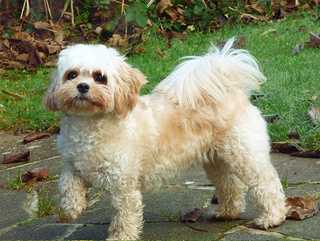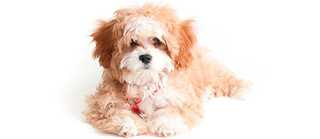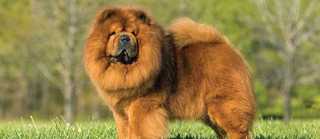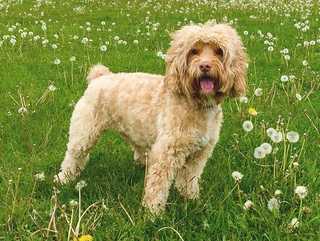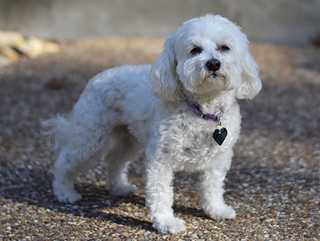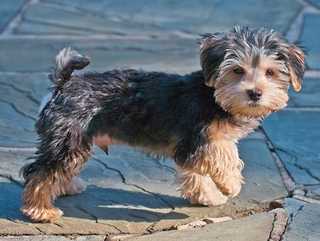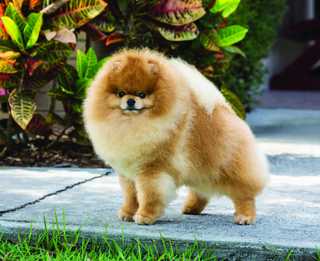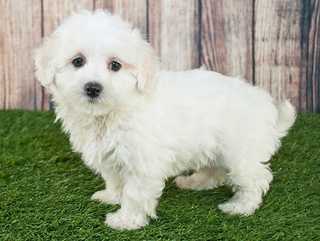
Note: While the breeds in this collection tend to be Teddy Bear Dogs, individual pets will vary. Please consult the adoption organization for details on a specific pet.
Chances are, you’ve seen dogs of lots of different breeds and mixes that brought out the “gotta-cuddle” impulse in you. And you may have also heard people talking about “Teddy Bear Dogs.” A teddy bear dog is not a single breed. This unofficial collection of canines includes any adorable pup with soulful shoe-button eyes, a boopable nose, and fluffy or plush soft fur. They vary in size -- although when people say they are looking for a dog who makes them think of a teddy bear, they usually are envisioning a small dog who can join them on their lap. It’s important to remember, however, that lots of dogs who are small in size can really fill up a room with their big personalities!
How Can I Adopt a Teddy Bear Dog?
- Review Dog Breeds. General dog breed information is a great place to start considering which breed may be your pet match. Remember: each pet is an individual. For teddy bear dogs who are a mix of two breeds, like the Cockapoo, Cavachon, or Goldendoodle, you will want to learn as much as possible about both of their parent breeds.
- Consider Your Needs: Review your household and your individual needs. A fuzzy dog will definitely need added grooming care. All that “cute” comes with extra brushing and trimming care and may require a regular trip to a professional groomer.
- Visit Local Shelters: Visiting your local animal shelter and meeting a dog can be an excellent way to explore your perfect pet match.
- Review Adoptable Pets Online: Help an adoptable dog find a forever home on Petfinder and search adoptable pets in your area. Search for a dog by fur length if the cuddle factor is what you are looking for, but keep in mind that even a short-furred dog can have that soulful and sweet “teddy bear” look.
Note: While the breeds in this collection tend to be smart, individual pets will vary. Please consult the adoption organization for details on a specific pet.
Because teddy bear dogs include crossbreeds as well as purebreds, the appearance and personality of the dogs we’ve chosen to introduce to you here will, of course, vary. This list focuses on dogs who tend to bring out the “aww” response in adopters who cherish the cute in dogs. Remember, the cuddliest small dog in the crowd could also have a spitfire personality! Here are just ten breeds and mixes, small and large, that are often called the “teddy bears” of dogdom.
Cavapoo
- A People Dog: Cavapoos are so happy in the company of people - one reason why they are so popular! Some may be unhappy being alone, however, so to avoid problems with separation anxiety, be sure to begin thoughtful socialization and training at puppyhood.
- Origins: Intentional breeding of the Cavalier King Charles Spaniel and Poodle began in the late 1990s in Australia, although accidental litters likely occurred before then.
- Busy, Trainable and Obedient: The Cavapoo is just as happy playing a game with you in the yard as they are snuggling up next to you on the couch after the game has worn them out. These smart little dogs will enjoy learning tricks to challenge their sharp minds.
Cavachon
- Cute Crossbreed with a Family Flair: The less-shedding fur, compact size and average energy level makes the cute Cavachon a great family pet.
- Origins: A newly developed mixed breed, the Cavachon is a Cavalier King Charles Spaniel and Bichon Frise crossbreed that appeared around 1996 in the United States.
- Small, Spunky and Full of Fun: The Cavachon is outgoing and intelligent, and they respond well to positive-based training. Their size and adaptability makes them a good choice for any home where they get exercise, grooming, and love.
Chow Chow
- Powerful Dog in a Huggable Exterior. The thick fur and woolly undercoat provides insulation from the cold and covers a strong muscular frame
- Origins: The Chow Chow is an East Asian dog whose lion-like physique may have been the model for the ancient statues that guard Buddhist temples. In the 1800’s, Queen Victoria’s interest in the Chow Chow helped draw attention to the breed.
- Aloof but Loyal: This breed is cautious when meeting new people and pets, but is known to be devoted and loyal to their family.
Cockapoo
- First of a Trend: Originating in the 1960s, this mix of Cocker Spaniel and Poodle was one of the first intentional canine cross breeds, popularly called “designer dogs.”
- Origins: The first occurrences of the Cockapoo were likely accidental, but as they gained a positive reputation as a family dog, breeders began intentionally combining the two breeds.
- Fun Loving Family Dog: The Cockapoo is an extremely friendly and happy dog, very people-oriented and willing to please. Intelligent, with a moderate energy level, you’ll find that this dog is up for any lesson or game, and tends to accept other pets in the home as well.
Goldendoodle
- Friendly, Loving Family Companion: This mix breed of Golden Retriever and Poodle parentage is a great fit for a family who loves to play.
- Origin: The Goldendoodle did not appear in America until the 1990s, but since then has gained popularity due to their happy personality and lower-dander coat, and as a larger family-dog alternative to the Cockapoo.
- High-Energy and Trainable: With two active breeds in the bloodline, the Goldendoodle has a high energy level combined with people-pleasing smarts. Expect to devote some time each day exercising and training a Doodle.
Lhasa Apso
- Popular Breed: This familiar family pet has naturally long, flowing fur. The coat is often trimmed into a short, pert “teddy bear” cut that reveals an alert and expressive gaze.
- Origin: The Lhasa Apso is an ancient breed that guarded the Buddhist monasteries of Tibet and arrived in America around 1930, as gifts from the thirteenth Dalai Lama.
- Small but Bold: Despite its lapdog appearance, the Lhasa is independent and loves a good romp or game. These characteristics make the Lhasa an excellent small companion in adventure
Maltipoo
- Small, Sweet, Smart: This mixed breed dog of Maltese and Poodle parents is an all- around family dog, happy at play, in a lap, and often enjoys children and other pets.
- Origin: The Maltipoo’s exact date of origin is unknown, and they were bred in the United States to be a small, affectionate companion dog.
- An Option for Allergy Sufferers: The Maltipoo was conceived as a companion dog for people who suffer from allergies. While no dog is completely hypoallergenic, the Maltipoo may inherit a tendency to have less dander from the Poodle parent, making them a possible choice for a family trying to manage allergies.
Morkie
- Small Dog Lifestyle: A Morkie is a cross breed between a Maltese and a Yorkshire Terrier, and at around 13 pounds is a teddy-bear option for someone partial to smaller canines.
- Origin: The Morkie bounced into family homes in the late 1990s, although accidental breeding likely appeared before then.
- Small Dog, Big Personality: Morkies have a reputation for tons of character, lots of energy, a smart brain, a bit of stubbornness, and a reliable bark, all wrapped up in one small-and-cute canine package.
Pomeranian
- A Popular Pet: This fox-like small dog has a rounded body, small ears, a thick double coat, and a curled tail. It is the soft undercoat, puffy outercoat, and alert button eyes that bring a stuffed pet to mind.
- Origin: The diminutive Pomeranian has strong sled-dog ancestors
- Bouncy, Bold and Busy: Although the Pomeranian may be toy sized, their energy and playfulness is near the top of the scale.
Pomsky
- A Recent Arrival: The first official record of the energetic Pomsky was 2012 in the United States.
- Origin: The Pomsky is bred via artificial insemination and combines the fun-loving nature of the Siberian Husky with a smaller size inherited from the Pomeranian.
- Attention loving, Funny, and Intelligent: With sled-dog ancestors in both parent breeds, the Pomsky has inherited energy and drive, and of course a soft, fluffy double coat/ The coloration of the Pomsky can vary, and is found in gray, red, black, brown and cream. Markings can be husky-like, solid, or even parti-colored.
Teddy Bear Dog FAQ
QUESTION: Are teddy bear dogs “lap dogs?”
ANSWER: While every teddy bear mix or breed certainly looks huggable, they are intelligent, active dogs with independent personalities. While they are loyal and happy to nap at your side, they also need regular exercise and love an adventure.
The Designer Dog collection page is not yet published. It could be linked here once it is:
QUESTION: What is a “designer dog?”
ANSWER: Some teddy bear dogs – think Goldendoodle – are mixed breeds originally bred from popular people-loving purebred dogs to highlight certain attributes like the Golden Retriever’s friendliness and the Poodle’s curly fur and intelligence.
QUESTION: Are teddy bear dogs available for adoption at animal shelters?
ANSWER: Absolutely. Because these dogs are popular pets, they are often taken to shelters and rescues when they are found as strays or are surrendered by their previous owners who might not be able to keep them due to changes in their own lives. There are even rescues specifically dedicated to rehoming Chow Chows, Goldendoodles, Cockapoos, and other mixed breed or purebred teddy-bear-like dogs.
5 Tips for Keeping a Teddy Bear Dog Happy
- All Teddy Bear Dogs Require Regular Grooming: The beautiful coat that give these dogs their plushy appearance also needs daily brushing and may need a monthly clip by a professional groomer to keep that soft, round, bearish look.
- Cultivate Loyalty: With alert-dog and working dog backgrounds, teddy bear breeds and mixes need thoughtful introductions to new people and new pets to help create a strong and positive bond.
- Regular Walks: Dogs are happiest when they have daily exercise and even if some of them look like toys, many teddy bear dogs are high-activity companions.
- Use Positive Reinforcement: With ancestors bred to guard temples, pull sleds, and work alongside people, Teddy Bear dogs learn best with motivation, praise and rewards,
- Ask for Permission to Pet: While the cute factor of Teddy Bear dogs is off the charts, they like to meet strangers on their own terms so don’t swoop in for a surprise hug.
